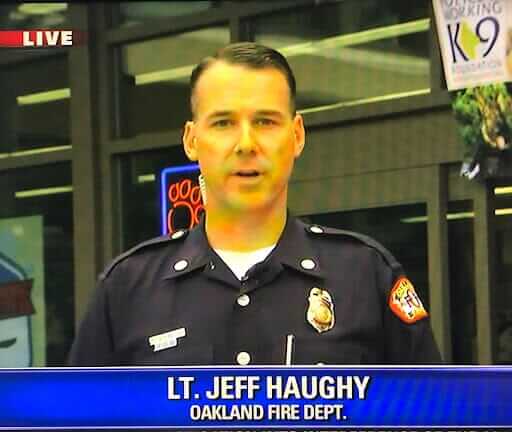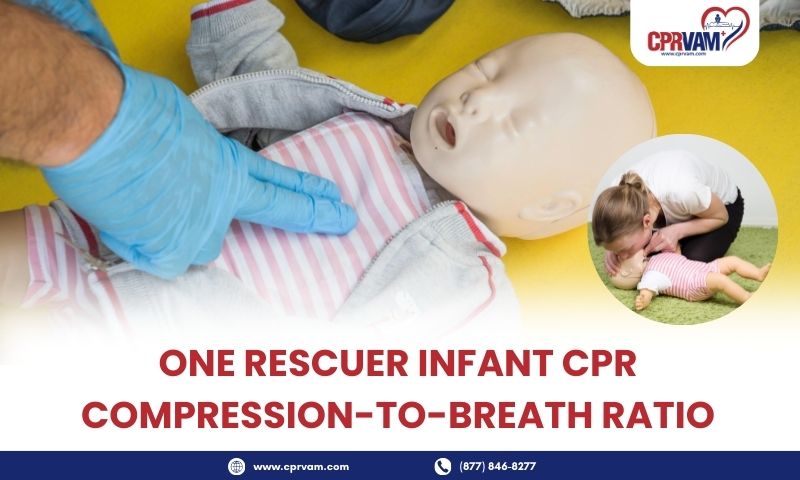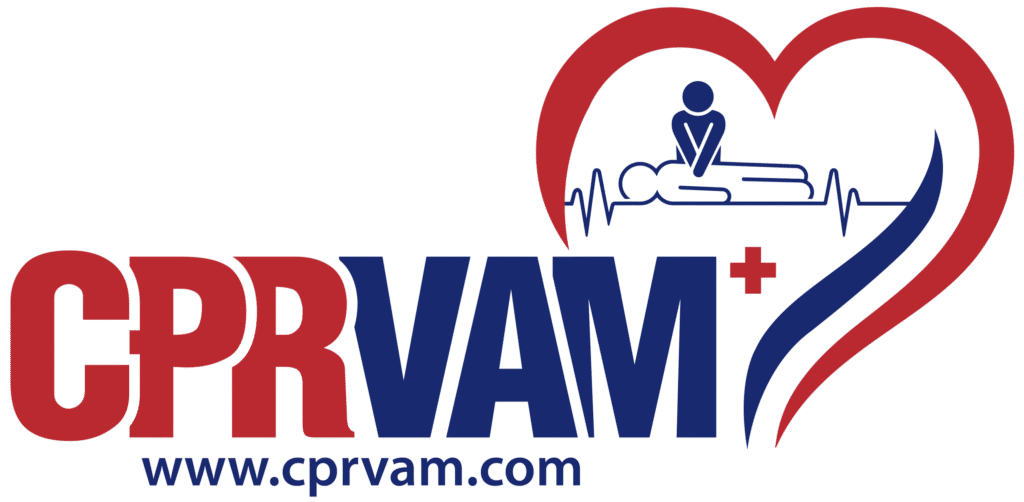Life-threatening emergencies like sudden cardiac arrest (SCA) can strike without warning. In those moments, every second matters. The ability to respond quickly with cardiopulmonary resuscitation (CPR) often makes the difference between life and death.
But performing CPR incorrectly can reduce its effectiveness or even put the victim at greater risk. Many people, even trained responders, make simple yet critical errors during CPR. These mistakes often come from hesitation, outdated techniques, or not following current evidence-based AHA guidelines.
To maximize the chances of survival, responders must act decisively: assess the situation, check responsiveness and breathing, and apply proper hand placement, compression depth, and rate. Any deviation from the correct method can compromise CPR’s effectiveness.
This blog will break down the 7 most common CPR mistakes people make when performing CPR. By recognizing and correcting these errors, you’ll be better prepared to start CPR more confidently and increase the victim’s chance of survival.
1. Forgetting to Call 911
One of the biggest mistakes during a cardiac emergency is forgetting to call 911. The sooner you contact emergency medical services, the sooner the victim receives professional treatment and this can dramatically improve survival chances in out-of-hospital cardiac arrest (OHCA) cases.
In the rush to begin CPR, many bystanders skip this crucial step. As a result, the victim’s access to advanced care gets delayed. Always remember: call 911 immediately, or if someone else is nearby, instruct them to make the call while you start CPR. Provide clear details about the victim’s condition and the situation. Emergency dispatchers can also guide you through CPR until medical teams arrive.
2. Delay in Performing CPR
A delay in starting CPR can mean the difference between survival and death. Yet, many bystanders hesitate to act when faced with such a crisis. The hesitation often comes from fear—fear of doing CPR incorrectly, fear of causing harm, or fear of legal consequences. Misconceptions also play a big role. Some people believe they need advanced medical equipment, that mouth-to-mouth resuscitation is always required, or that broken ribs automatically signal danger. These myths stop people from taking immediate action.
In reality, performing CPR right away even if it isn’t perfect greatly increases the chance of survival. With the right knowledge and confidence, anyone can step in and provide life-saving help without second-guessing.
3. Not Checking for Signs of Breathing and Responsiveness
Another mistake during an emergency is starting CPR without first checking the victim’s breathing and responsiveness. This step is critical because it helps you determine whether the person is in cardiac arrest or experiencing a different medical emergency.
A cardiac arrest victim is unresponsive and either not breathing at all or only gasping irregularly. In contrast, a person having a heart attack is usually still conscious, responsive, and breathing normally, though they may be in severe pain. These two conditions often get confused, but they require very different responses.
If the victim is in cardiac arrest, you must begin CPR immediately. If it’s a heart attack, CPR is not necessary—calling emergency services and providing other first aid steps is more appropriate. That’s why you should always take a few seconds to check for responsiveness and normal breathing before starting chest compressions.
4. Not Managing the Airway
Airway management is the very first step in the Airway, Breathing, and Circulation (ABC) approach to assessing a victim’s condition. If the airway is blocked, oxygen cannot reach the lungs even if chest compressions are done perfectly.
The most common mistake in bystander CPR is failing to open and maintain the airway. Many rescuers skip essential steps like the head-tilt–chin-lift technique, clearing visible obstructions, or providing safe ventilation. When the airway remains closed, rescue breaths and other CPR techniques lose their effectiveness, putting the victim at greater risk.
5. Inadequate Compression Depth and Rate
High-quality chest compressions are the foundation of effective CPR. To keep blood circulating, you must apply the correct depth and maintain the right rate. Compressions should reach about 2 inches deep, allowing the heart to refill properly between each push. A steady rhythm of 100–120 compressions per minute ensures full chest recoil and effective blood flow.
Because chest compressions are physically demanding, rescuers often struggle to maintain consistent depth and speed over time. Fatigue can cause shallower compressions or unnecessary pauses, reducing the effectiveness of CPR. To prevent this, rescuers should switch positions regularly, ensuring compressions remain strong, deep, and uninterrupted.
6. Incorrect Hand Placement
Placing your hands correctly during CPR is essential for effective chest compressions. When hands are positioned incorrectly, the quality of CPR drops significantly, and the risk of rib fractures or internal injuries increases. This mistake often happens when someone has not received proper CPR training or is unsure about the correct technique.
Another common error is bending the arms while giving compressions. Bent arms reduce the force needed to achieve the proper compression depth, which is critical for maintaining blood circulation. To deliver strong and effective compressions, keep your arms straight and use your body weight to push down with enough force. Correct technique not only improves survival chances but also prevents unnecessary harm.
7. Hesitating to Use an AED Even When Available
Yet, many bystanders hesitate to use the device even when it’s within reach. Fear, lack of training, or uncertainty often cause this delay. Unfortunately, every second without defibrillation reduces the victim’s chance of recovery.
Performing CPR alone helps, but without activating the AED, the victim loses the strongest opportunity for their heart to restart. Overcoming this hesitation is critical, since AEDs are designed to be simple, safe, and effective for anyone to use in an emergency.
Follow The Right Way to Perform CPR
Mistakes when performing CPR should not be taken lightly, as it is a matter of someone’s life. Whether you are a bystander,community volunteer, fitness trainer, coach, firefighter, babysitter, teacher, parent, or healthcare professional, you should know the right way to perform CPR to potentially save a life until professional help arrives. Follow these steps to perform CPR effectively:
1. Ensure the scene is safe. Before approaching the victim, check your surroundings to prevent additional accidents or harm.
2. Call 911 immediately. If others are present, delegate someone to contact emergency services while you start CPR.
3. Position the victim properly. Lay the person on their back on a firm, flat surface. Open their airway by gently tilting the head back and lifting the chin.
4. Start CPR without delay. Begin chest compressions as soon as you confirm the person is unresponsive and not breathing normally.
5. Perform chest compressions correctly. Place one hand over the other at the center of the chest, just below the nipples. Keep your arms straight and shoulders directly above your hands. Push hard and fast, compressing the chest about 2 inches (5 cm) deep at a rate of 100–120 compressions per minute, allowing full chest recoil after each push.
6. Give rescue breaths if trained. If you are skilled in mouth-to-mouth resuscitation, maintain a ratio of 30 compressions to 2 rescue breaths. Only perform breaths if you feel confident and trained.
7. Use an AED as soon as possible. Follow the device’s voice prompts immediately to increase the victim’s chances of survival.
Get Training and Practice for Effective CPR
The quality of CPR can mean the difference between life and death. Mistakes like improper hand placement, delay in initiation, ignoring scene safety, or AED usage reduce the effectiveness of CPR and decrease the recovery chances of the victim. It is important to recognise and address the reasons why rescuers make these mistakes. Bystander CPR plays a huge role in increasing the survival rate of cardiac arrest victims. By acknowledging its importance, high-level public awareness regarding CPR and its correct techniques is needed.
However, knowledge alone is not enough. Confidence and competence come from hands-on training and regular practice. That is why reputed organizations such as the American Heart Association (AHA) and American Red Cross (ARC) offer various CPR classes, including refresher courses, designed for every individual, laypeople, or those from a medical background. The CPR training program is the best way to boost your emergency preparedness.
Don’t wait for an emergency to test your abilities. Avoid all mistakes that can cost the victim’s lives. Thus, enroll in a CPR training today near your location from CPR VAM and gain the practical experience needed to save lives when it matters most.
Common CPR Mistakes FAQs
1. What are the Golden Rules of CPR?
The golden rules of CPR can be summarized as Check, Call, Compress, and Care. First, check the scene and the victim’s condition using the Airway, Breathing, and Circulation (ABC) approach. Ensure the area is safe, then quickly assess if the person is responsive and breathing.
Next, call for help immediately. Alert emergency medical services so professional assistance is on the way.
Then, compress the chest effectively. Provide firm, rhythmic chest compressions at the proper depth and rate. If you are a trained rescuer, combine compressions with rescue breaths to increase the chances of survival.
Finally, care for the victim until professional help arrives. This may involve monitoring their breathing, maintaining an open airway, and being ready to continue CPR as needed.
Following these steps ensures you respond effectively in an emergency and maximize the victim’s chances of survival.
2. What is Your Primary Goal as a Rescuer When Giving CPR?
When you perform CPR, your main goal is to keep blood flowing to the vital organs, especially the brain, until professional medical help arrives. By restoring and maintaining the heartbeat and breathing, you give the person the best chance of survival and reduce the risk of permanent organ damage.
3. What is the Most Common Reason CPR is Unsuccessful?
CPR often fails because rescuers do not push hard enough or place their hands incorrectly during chest compressions. Other common mistakes include delaying CPR, forgetting to call emergency medical services (EMS), and neglecting to ensure the scene is safe before starting. Initiating CPR promptly and performing compressions correctly significantly increases a person’s chance of survival.
4. What is the Most Important Part of CPR?
Chest compressions are the most crucial part of CPR. When performed effectively, they maintain blood flow to the heart and brain, buying critical time for the victim. While rescue breaths and the use of an AED (Automated External Defibrillator) enhance survival chances, consistent, high-quality chest compressions have the greatest immediate impact during sudden cardiac arrest (SCA).
5. What is the Correct Chest Compression Depth and Rate?
When performing CPR, aim for a chest compression depth of 2 inches for adults and 1.5 inches for children and infants. Maintain a steady compression rate of 100 to 120 compressions per minute. If you are providing rescue breaths, follow the 30:2 ratio—30 compressions followed by 2 rescue breaths. Keep this cycle going without interruption until the person shows signs of life or emergency medical help arrives. Proper depth and rate are crucial to maintain blood circulation and improve the victim’s chances of survival.









